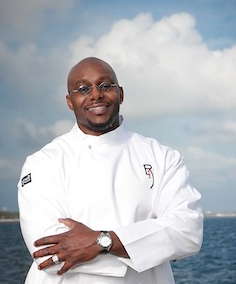Culture is very important to everyone or at least it should be. Without culture you have no foundation, no blueprint, and quite frankly no future. February as you know is Black History Month. With food being a great part of my life I think it only appropriate that we talk about the History of African American Food. As I start to write I cant help but think of my Grandma Sarah baking a ham, smothering chops in a rich brown gravy, not to mention her wonderfully moist lemon pound cake (recipe found on my site). I never saw her use a cookbook, never saw her look for a recipe, or even a measuring cup for anything. Yet, her food always turned out perfect in every way! It was simply magical!
When thinking of African American Food the term Soul Food comes up. This term became popular in the 1960s and was given to Black food because it was said that each dish came from the soul and had the ability to reach the souls of all who partook in it. During Slavery Africans were often given leftover foods from the plantation to make do with as they saw fit and they did. From these “waste foods” delicacy’s such as collard greens, turnip greens, Ox-tails, ham hocks,and Chitterlings ( pig intestines) were conceived. Recipes and cooking techniques were passed down verbally and by way of tutorial because during these times it was illegal for slaves to learn to read or write. This answers my question on how my Grandma Sarah was able to cook without using measuring cups, spoons, and recipes. It was in her blood.
Cooking was done mostly over open pits where cooking techniques such as frying, grilling, boiling, roasting, and steaming were perfected. Seasoning such as garlic, wild onions, as well as salt, sugar, and fat were used to season foods. Without the convenience of refrigeration the slaves were forced to used salt to preserve their food. As time passed slaves began using other skills such as hunting and fishing to expand food choices from this squirrels, rabbits, and fresh fish were added as staples in their diet. In some cases slave owners would give the slaves portions of barren land to farm and crops like kale, pokeweed , fruit, and mustard greens were cultivated regularly. Slaves often worked 16-18 hour days in the fields. When the field work was done the women would prepare one pot meals for their family. During this time tales of the days events would be told, singing, and the uplifting of downed souls.
Today in the African American culture our roots run deep in our past. Even with the ability to read and write, recipes are still handed down orally and through tutorials in some case. Cooking by “feel” still takes place (even in my kitchen), and the ability to feed a family using most anything is still prevalent in every African American house whole that I know of.
During slavery foods were cooked with large amount of sugar,fat, lard,and salt. Today we’ve found that some of these practices though flavorful could be harmful to ones health. So, healthier cooking materials, seasonings, and methods are being used to help promote a healthier lifestyle without watering down the culture of African American food.
African Americans mimic yesteryears pioneers in that food not only feeds the body but it nourishes souls hence “Soul Food”. Its nothing like going to Grand-Ma’s house on any given Sunday after church and Uncle Mark is bringing fresh cooked greens out of his garden. Aunt Mary is making smothered turkey wings with that 50 year old recipe she got from her Great Grandmother,and that banana pudding that nobody can make except Aunt Stacey and everyone’s praying she’ll pass down before her time comes or it’ll be lost forever. Just as our ancestors food brings our families together to celebrate, to discuss our hardships, our triumphs, and our dreams. In every culture there’s something that makes it unique. Look into your history and find yours. Learn it, embrace it, live it, but most of all remember it.
Like Haute Living Miami? Join our Facebook page or follow us on Twitter @HauteLivingFL. Want Haute Living Miami delivered to your inbox once a week? Sign up for our newsletter.
Chef Richard L. Ingraham was trained at the Culinary Institute of Atlanta and served as a Sous Chef of Executive Chef Matthew Rosekrans in the opening of The Bubble Room Champagne and Wine Bar. He moved on to become Executive Pastry Chef and Executive Sous Chef at Insignia Restaurant and in 1999, prepared meals under the guidance of Executive Chef Pete Pavisec. Chef Ingraham now holds the position of Private Chef for The Miami Heat’s Dwyane Wade. ww.chefrli.comChef Richard L. Ingraham was trained at the Culinary Institute of Atlanta and served as a Sous Chef of Executive Chef Matthew Rosekrans in the opening of The Bubble Room Champagne and Wine Bar. He moved on to become Executive Pastry Chef and Executive Sous Chef at Insignia Restaurant and in 1999, prepared meals under the guidance of Executive Chef Pete Pavisec. Chef Ingraham now holds the position of Private Chef for The Miami Heat’s Dwyane Wade. ww.chefrli.com





















